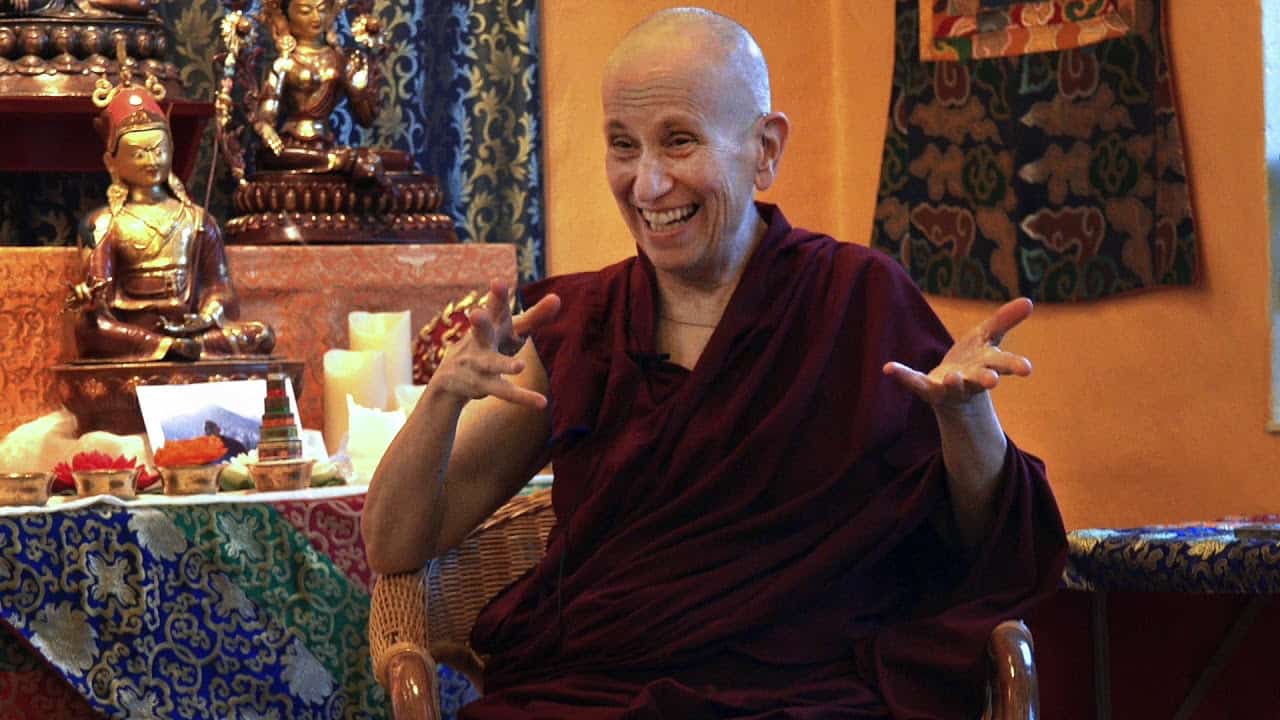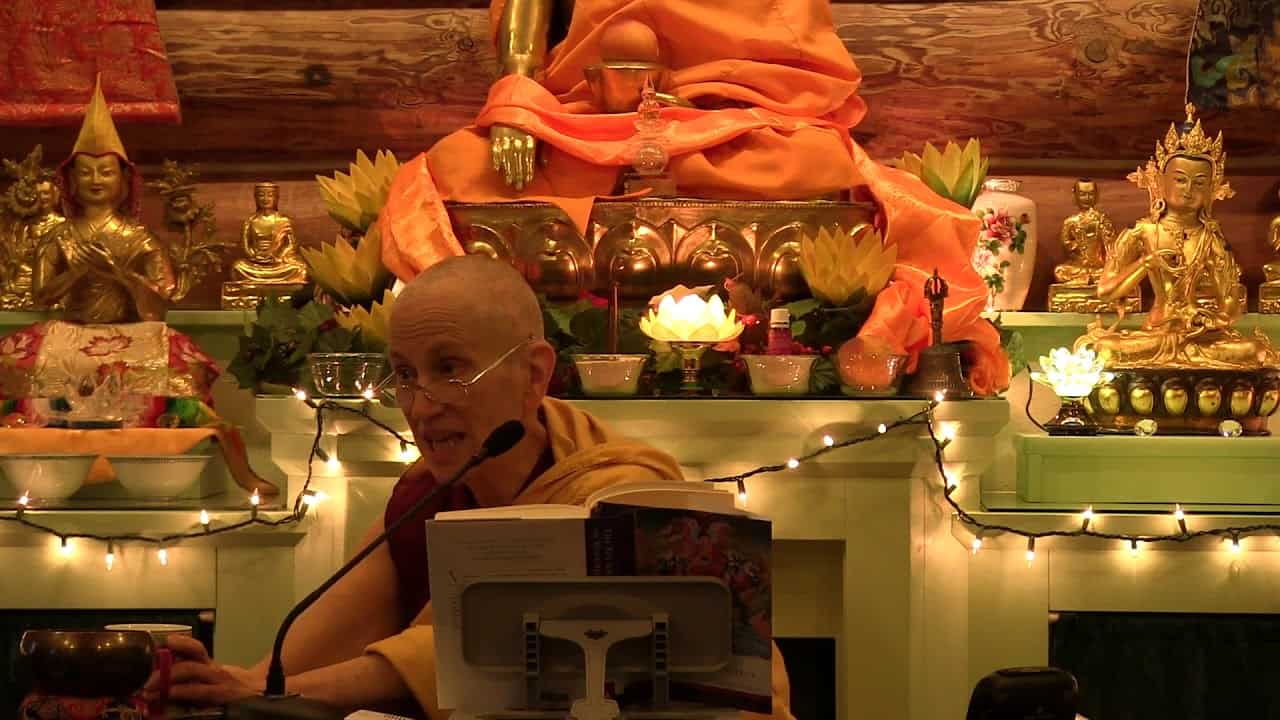Nirvana is true peace
03 Foundation of Buddhist Practice
Part of a series of teachings given during a retreat based on the book The Foundation of Buddhist Practice given at Sravasti Abbey.
- Questions and answers
- The fourth seal: Nirvana is true peace
- What is happiness?
- Attachment versus love
- What is inherent existence?
- The sequence of the four seals
- The four seals and the four truths
The Foundation of Buddhist Practice 03: Nirvana is true peace (download)
Contemplation points
- Spend some time really thinking about our situation in samsara: “Just as whatever grows from a poisonous seed will be poisonous, everything that arises from ignorance will be undesirable. As long as we remain under the control of ignorance and erroneous views, there is no possibility for lasting joy.” What kind of perspective and clarity does thinking about this bring to your mind? From what does lasting joy actually come?
- As our wisdom increases and we get an idea of how thing actually exist, it begins to harm the ignorance. Reflect of mental states that arise from ignorance (like attachment, anger, jealousy…). Can you see how they are filtered through a focus on I, me, my, and mine; how that is a distorted way of viewing the world? How might cultivating wisdom that doubts and investigates your afflictions change the way you interact with the world? How might this lead to peace and joy in your life?
- How does attachment interfere with the virtuous mind of love, defined as a wish for someone to have happiness and the causes of happiness simply because they exist? Can you differentiate between love and attachment as you reflect on your experience of relationships?
- What is inherent existence? Use some examples in your environment to work through the examination process that Venerable Chodron employs in the teaching.
- How is learning the Dharma different from the study you did in school? Why is repetition so important in the effort to transform the mind?
Venerable Thubten Chodron
Venerable Chodron emphasizes the practical application of Buddha’s teachings in our daily lives and is especially skilled at explaining them in ways easily understood and practiced by Westerners. She is well known for her warm, humorous, and lucid teachings. She was ordained as a Buddhist nun in 1977 by Kyabje Ling Rinpoche in Dharamsala, India, and in 1986 she received bhikshuni (full) ordination in Taiwan. Read her full bio.


